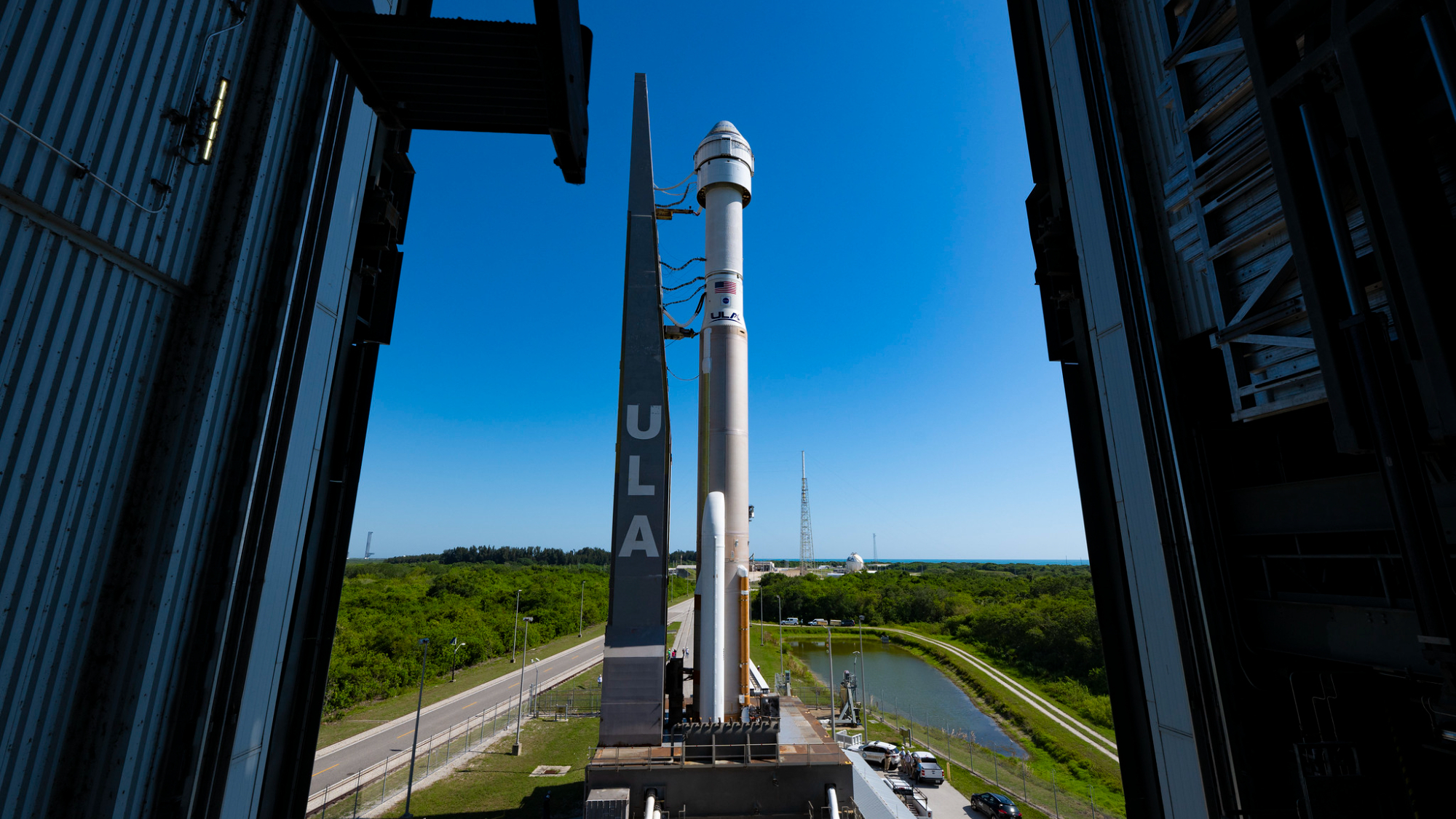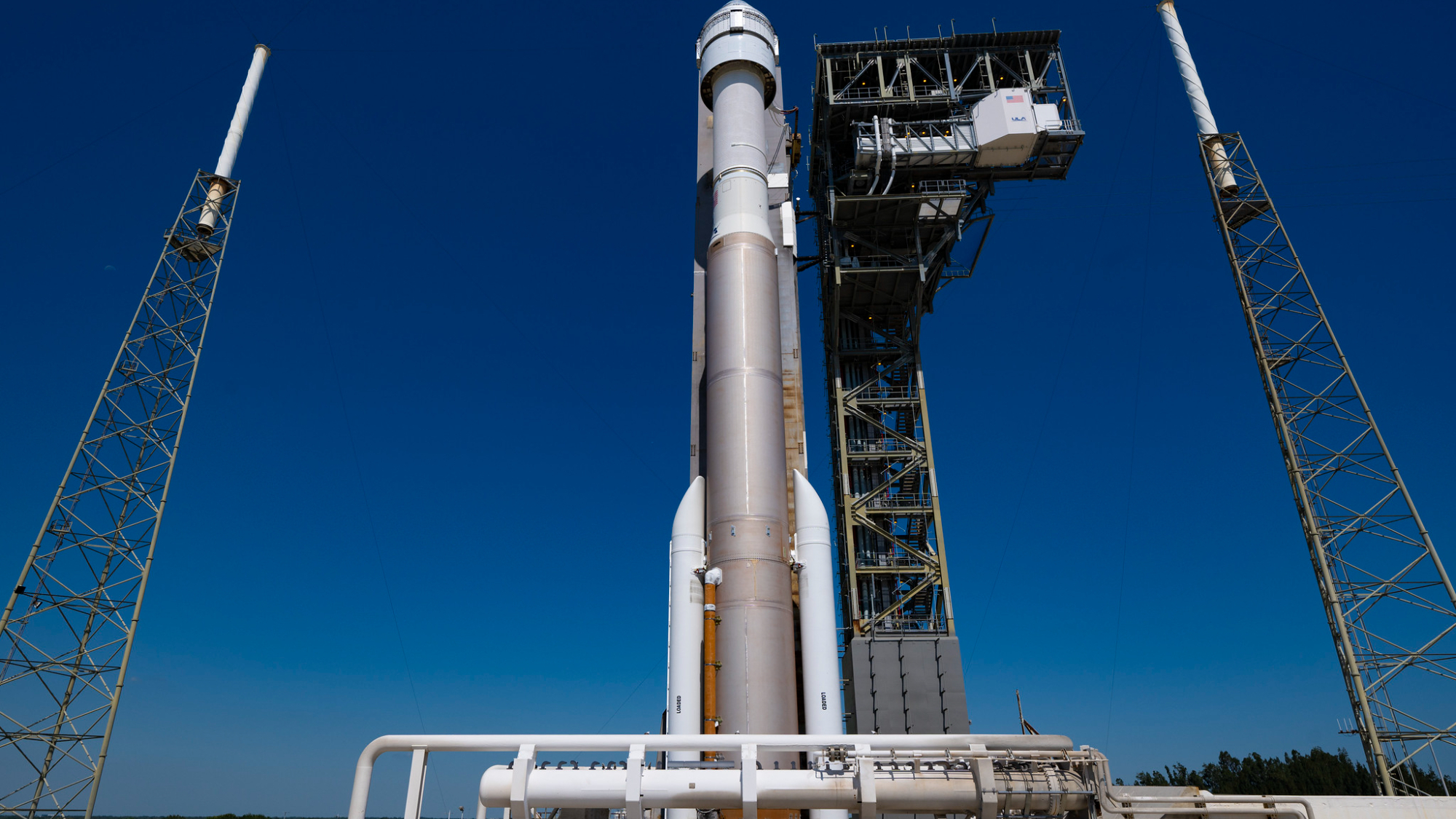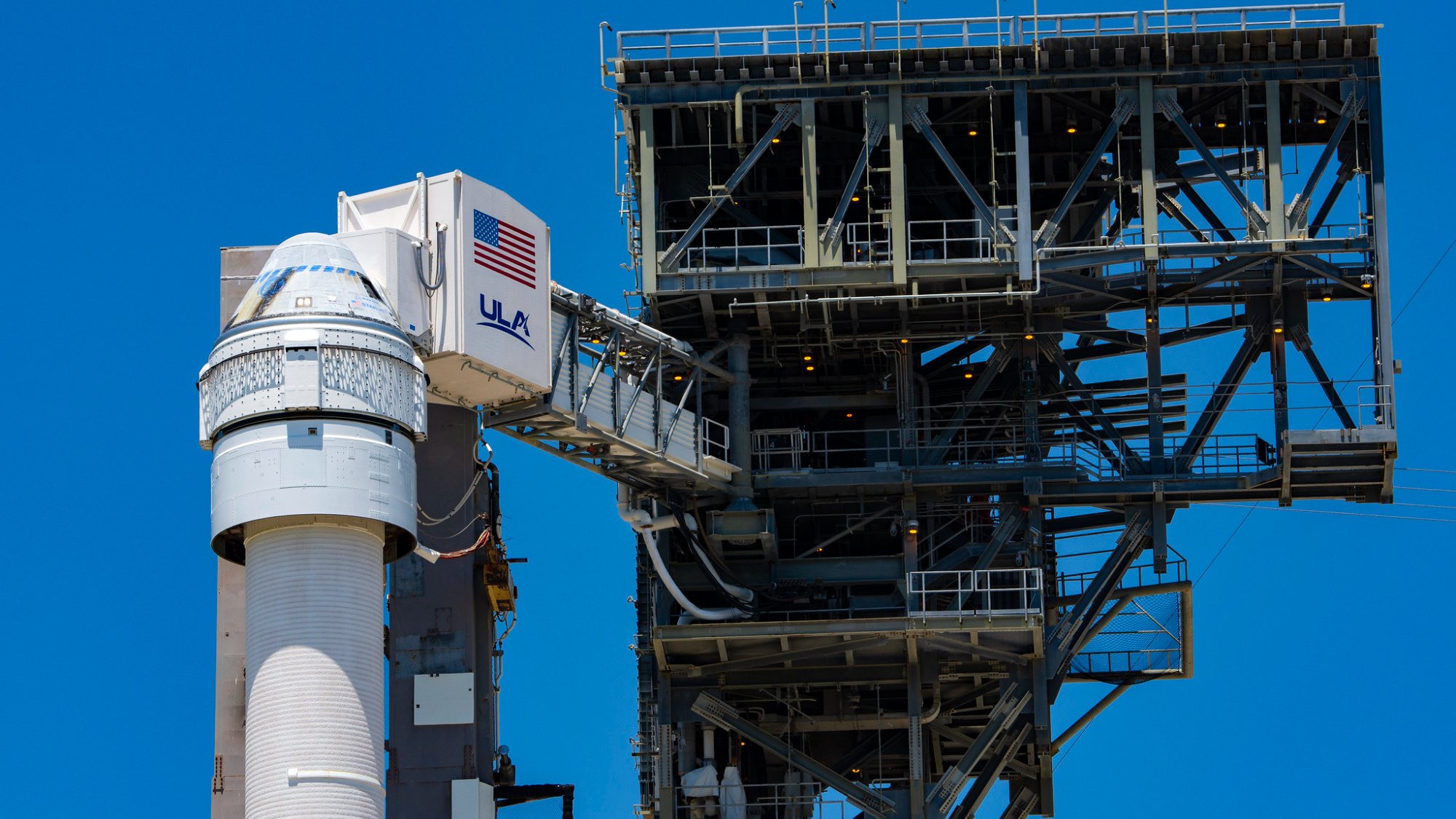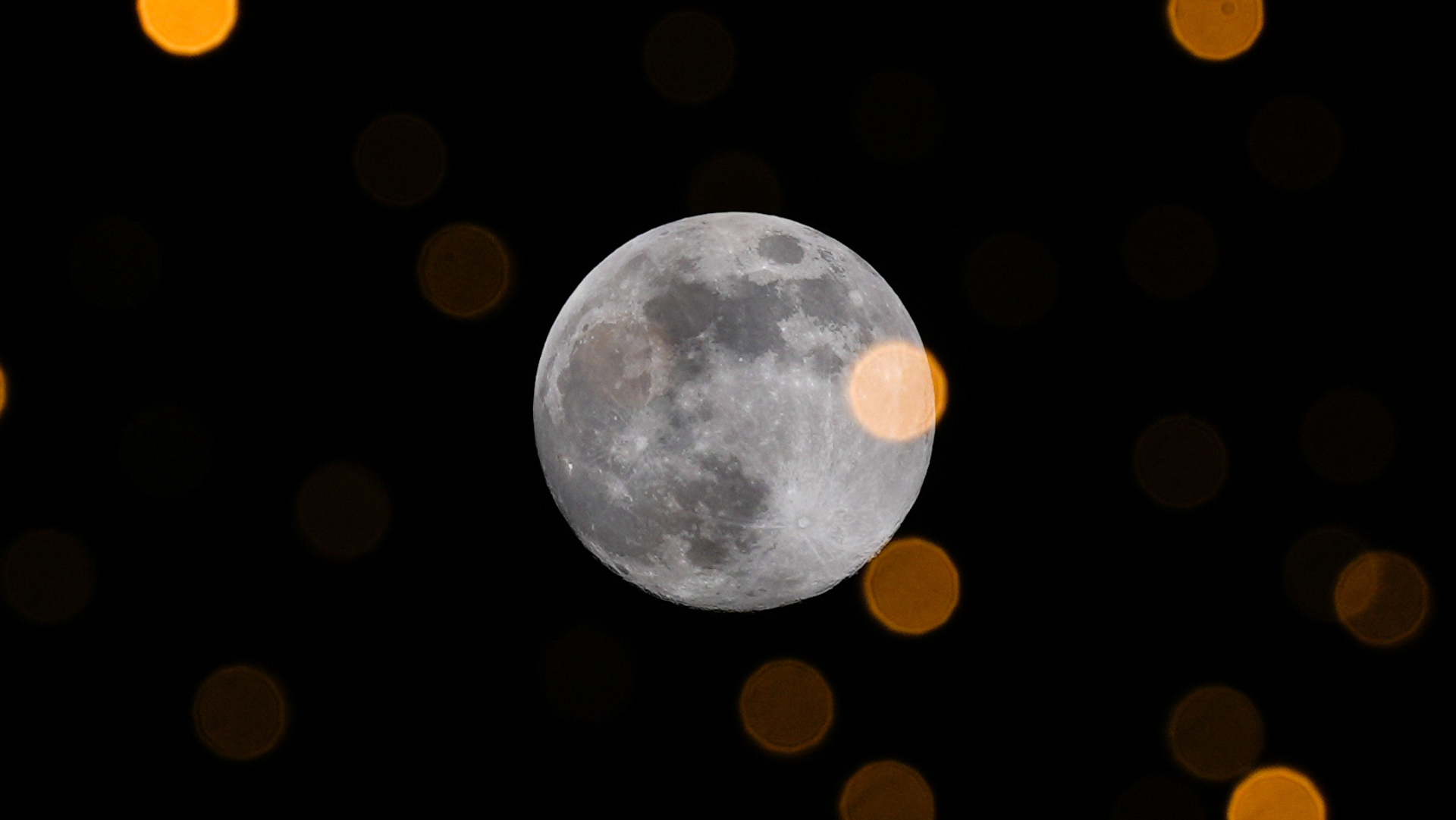Boeing's Starliner rolls out to pad for June 1 astronaut launch (photos)

Boeing's Starliner capsule is back at the launch pad.
Starliner and its rocket ride, a United Launch Alliance (ULA) Atlas V, rolled out to the pad at Florida's Cape Canaveral Space Force Station today (May 30) ahead of a planned Saturday (June 1) liftoff.
That launch, at 12:25 p.m. EDT (1625 GMT), will kick off Crew Flight Test (CFT), the first-ever astronaut mission for Starliner and the venerable Atlas V.
It was the second trip to the pad in less than a month for the Starliner-Atlas V stack. The duo first made the trip on May 4, ahead of a planned May 6 launch.
That attempt, however, was scrubbed about two hours before liftoff when team members noticed a misbehaving valve in the Atlas V's Centaur upper stage. ULA decided to replace the valve, which required rolling the rocket off the pad and back into a nearby assembly facility.
That process pushed CFT's targeted launch back to May 17. The date shifted further to the right, however, after a slight helium leak was detected in one of the reaction-control thrusters in Starliner's service module.
Breaking space news, the latest updates on rocket launches, skywatching events and more!
Boeing, NASA and ULA ultimately determined that the helium leak is a minor issue and, after a flight readiness review on Wednesday (May 29), cleared CFT for its June 1 liftoff.
The mission will send NASA astronauts Butch Wilmore and Suni Williams to the International Space Station (ISS) for about seven days. If all goes well, Starliner will be certified to fly operational, six-month crewed missions to and from the orbiting lab for NASA.
Boeing has a contract to do just that, as does SpaceX. Elon Musk's company flew its version of CFT, known as Demo-2, back in 2020 and is now in the middle of its eighth operational crewed mission to the ISS.
CFT will be the third liftoff for Starliner to date. The capsule first launched in December 2019, on an uncrewed test mission to the ISS that failed to reach its destination. Starliner succeeded on its second try, an uncrewed flight to the orbiting lab in May 2022.

Michael Wall is a Senior Space Writer with Space.com and joined the team in 2010. He primarily covers exoplanets, spaceflight and military space, but has been known to dabble in the space art beat. His book about the search for alien life, "Out There," was published on Nov. 13, 2018. Before becoming a science writer, Michael worked as a herpetologist and wildlife biologist. He has a Ph.D. in evolutionary biology from the University of Sydney, Australia, a bachelor's degree from the University of Arizona, and a graduate certificate in science writing from the University of California, Santa Cruz. To find out what his latest project is, you can follow Michael on Twitter.


